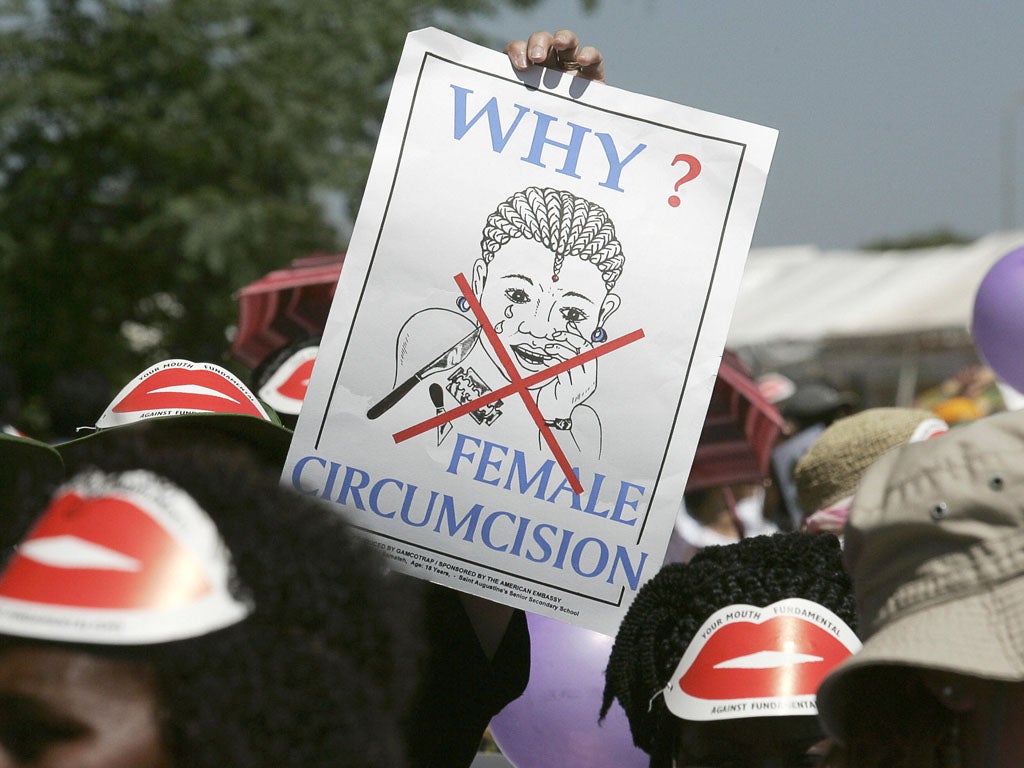FGM: What is Female Genital Mutilation and why was the first doctor to stand trial in the UK acquitted?
The CPS has been accused of launching the FGM trial due to pressure to get results

The Crown Prosecution Service (CPS) has been accused of bowing to “mounting” political pressure and a need to “get results” when it chose to launch an ill-judged trial against a young doctor for female genital mutilation, who was acquitted in less than 30 minutes.
Dr Dhanuson Dharmasena, who stood trial for FGM after he made a cut to a Somalian woman to help her give birth - effectively “repairing” the mutilation she had suffered at the age of six - was acquitted of the crime along with another man, Hasan Mohamed, who was cleared of abetting the offence.
On Thursday Dr Dharmasena’s layer said: “It seems as if the CPS was under pressure to do something and decided on this case. Maybe they thought, doctor, Somali guy, it is going to look great. But obviously, it has backfired massively.”
He added: “I think there must be some kind of trickle effect. They wanted results and they wanted to be in a position to say to the select committee we have got one prosecution under way, having spent the last 30 years not able to prosecute anybody.
But what is FGM and why is it important for the CPS to start taking action?
What is FGM?
Female Genital Mutilation is the name for a number of procedures that intentionally alter or cause injury to the female genital organs without medical necessity.
It is usually carried out on girls before the age of 15, most commonly before puberty starts. The NHS states FGM is traditionally conducted by a woman with no medical training, using no anaesthetics or anti-septic treatments, and using knives, scissors, scalpels, pieces of glass or razor blades, often causing victims to be forcibly restrained for the procedure.
What are the different types of FGM?
The World Health Organisation has identified four major types of FGM:
1. Clitoridectomy: partial or total removal of the clitoris.
2. Excision: removing part or all of the clitoris and the inner labia (lips that surround the vagina), with or without removal of the labia majora (larger outer lips).
3. Infibulation: narrowing of the vaginal opening by creating a seal, formed by cutting and repositioning the labia.
4. Other harmful procedures to the female genitalia for non-medical purposes, including pricking, piercing, incising, scraping and cauterizing the genital area.
How many women and girls in the UK have experienced FGM?
More than 66,000 women and girls in Britain are living with the consequences of FGM, according to the NHS.
While the practise in the UK is illegal, it is also an offence to arrange for a girl to be taken abroad for the crime to be performed. If caught, offenders face a large fine and a jail sentence of up to 14 years.
Who is at risk in the UK?
While FGM is mostly conducted in countries across north and east Africa and the Middle East, an estimated 20,000 girls under the age of 15 are at risk of FGM each year.
The true number is not known however, due to the “hidden” nature of the violence – often girls can be taken abroad for FGM during school holidays in order to give them a chance to “heal”.
Latest figures from the Health and Social Care Information Centre showed almost 500 newly identified cases of FMG were reported by hospitals across England in one month, with an average of 15 cases discovered on each day in November.
Why is the CPS apparently under “pressure” to prosecute people for FGM?
FGM has been illegal in the UK since 1985 and while 20,000 girls are thought to be at risk each year, there has not been a single conviction for the crime in this 30 year period.
The trial of Dr Dharmasena is the only case of a charge of FGM in Britain, as the CPS had ruled that there should be no prosecution in 11 previous cases.
Dr Dharmasena and Mr Mohamed were charged with FGM just four days before MPs were due to question the Director of Public Prosecutions, Alison Saunders, over the failure to prosecute anyone with the crime in 30 years
The MPs later concluded that authorities needed to act immediately over this “ongoing national scandal”.
Why was Dr Dharmasena acquitted?
Dr Dharmasena was charged after he made a 1.5cm cut to a Somalian woman’s genitalia, under pressure from Mr Mohamed, after the woman went into emergency labour at Whittington Hospital in north London last November. The cut, which was made to help the woman give birth as she had emergency surgery to save the life of her child.
Information that the mother had become a victim of FGM while in Somalia at the age of six had emerged earlier in her pregnancy and told to a midwife at the hospital, but opportunities to alert the doctor had been missed and instead the registrar only discovered her history of FGM as he performed the emergency surgery.
Dr Dharmasena was charged with the offence after effectively “repairing” the FGM because the mother began oozing blood, the jury was told. The decision to charge him was later criticised when the mother in question declined to give a statement to police on the case because she did not support the prosecution.
The doctor was acquitted by jurors in less than 30 minutes.
Subscribe to Independent Premium to bookmark this article
Want to bookmark your favourite articles and stories to read or reference later? Start your Independent Premium subscription today.
